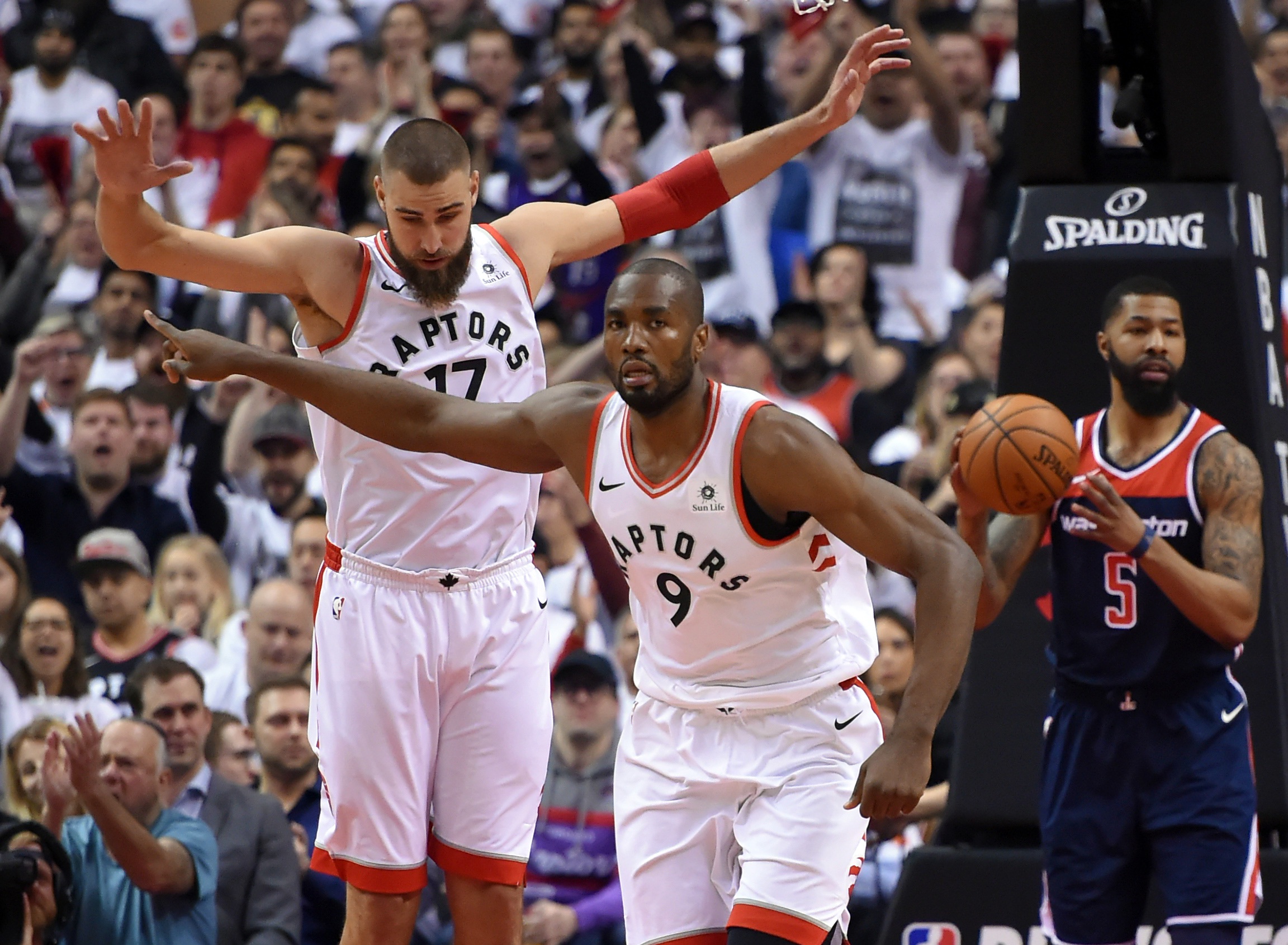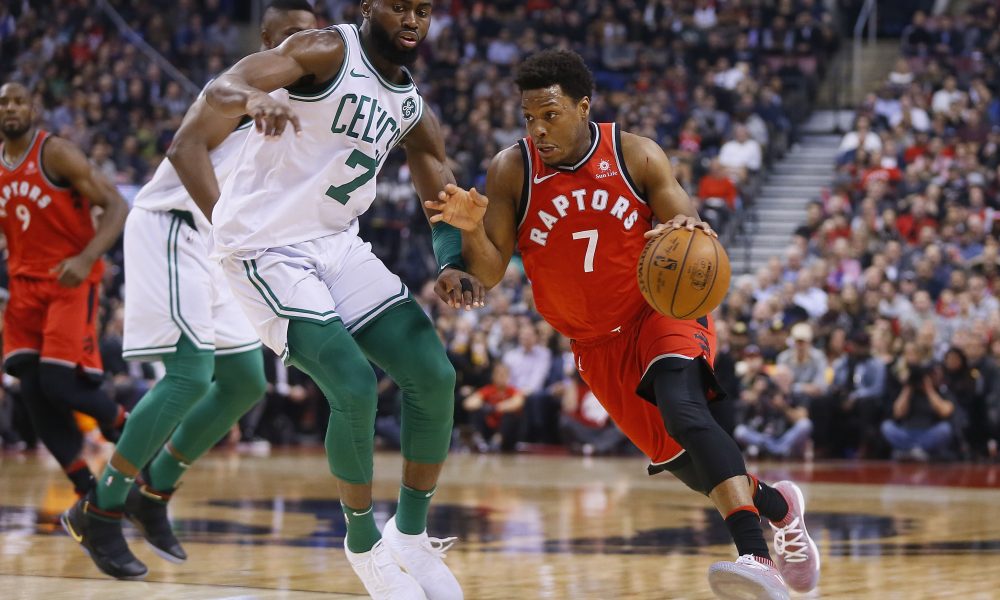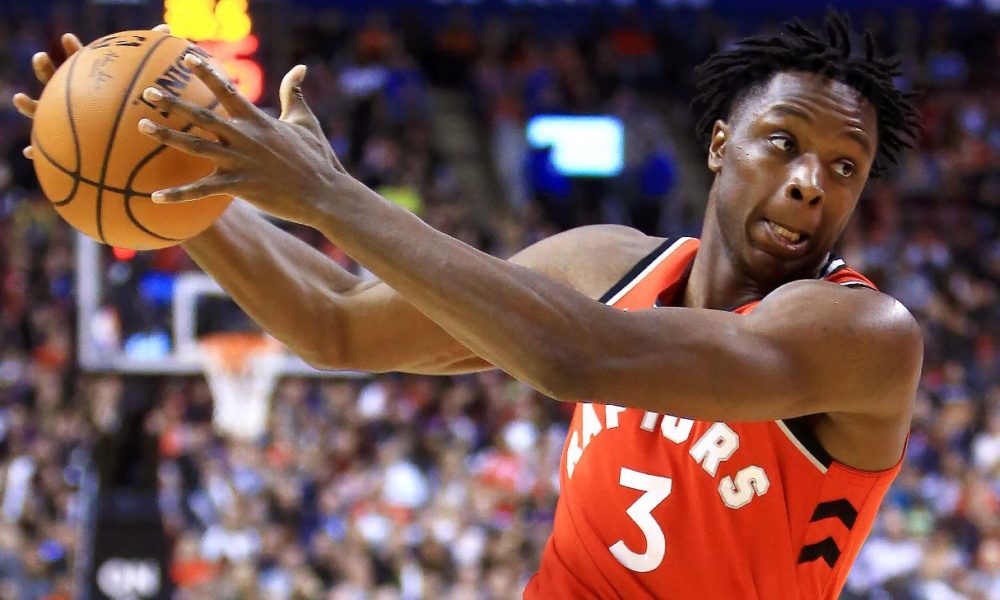Last season Dwane Casey was stubborn with his lineups and rotations. He preferred to play big, electing to go with a starting lineup featuring two big men at the power forward and center positions — part of a fivesome that ended up being one of the highest-usage groups in the league — in hopes that Serge Ibaka and Jonas Valanciunas could stay on the floor against smaller lineups. It worked, in the regular season at least, where the two-man combination of Ibaka and Valanciunas outscored opponents by 6.7 points per 100 possessions. What Casey failed to project, however, was that in the playoffs opposing teams often go smaller and develop more in-depth game plans to create advantages, and having two slow big men on the court together created more opportunities for opposing offences to create mismatches on the perimeter, forcing either Ibaka or Valanciunas out of their comfort zone. It felt like Casey was often being forced to adjust to smaller lineups out of necessity rather than desire. New head coach Nick Nurse doesn’t want to be adjust out of desperation; he wants opposing teams to adjust to him.
It was impossible to know much about Nurse before the preseason started. We don’t know what he told Raptors brass in his interviews about how he plans to run the team or what he plans to do differently than Casey. We knew he was a free-thinking innovator, but we didn’t know how he planned to innovate with this roster. After the most interesting preseason in years, which isn’t saying much, by the way, we have a better idea of how Nurse wants this team to look. Most notably, that he wants to play small, separating his big men so that just one of Ibaka and Valanciunas is on the court at any given time. Nurse believes that one way to overcome the Raptors past playoff struggles is to rotate Ibaka and Valanciunas at the center position rather than playing the two together in an attempt to become less exploitable. It’s the way the rest of the league is moving, and Nurse is tired of the Raptors playing catch up.
—
Last season the Raptors had the fifth best defensive rating in the league at 105.9. Though it may have fooled the average fan into thinking it was elite, upon further review that defence not only slowed down towards the end of the season and into the playoffs, but it actually cratered against top offences all season long. Toronto went from a net rating of plus-14.9 points per-100 possessions against sub-.500 teams to a mediocre plus-3.5 against teams over that benchmark.

As Vivek Jakob writes, “They say good defence travels in the NBA, and while the Raptors went 19-9 at home against plus-.500 teams over the regular season and playoffs, they were just 9-18 away from the friendly confines of Scotiabank Arena. Their defence, supposedly good, failed to travel.”
So how do you build an elite defence around Ibaka or Valanciunas, two big men who can’t consistently stay in front of faster players, rotate quickly enough to cut off penetration, or cover for other players’ mistakes? First of all, you don’t play them together. Secondly, as Jonathan Tjarks outlines in this piece exploring how the Denver Nuggets have the same problem with Nikola Jokic, the best course of action is to surround your center with long, athletic defenders who can make it easier for your center on defence, much like the Dallas Mavericks did throughout Dirk Nowitzki’s successful career.
Fortunately for Nurse, this Raptors roster is full of versatile, athletic defenders with long wingspans like OG Anunoby, Delon Wright, Norman Powell, Danny Green, Kawhi Leonard, and Pascal Siakam, who can switch across multiple positions and cover for less-athletic big men like Ibaka and JV (it’s important to note that Ibaka is not slow compared to other centers around the league, and he is a solid defender, but his quickly declining athleticism means the team has to adjust sooner rather than later). The Raptors have the personnel to be an elite defensive team, and by playing Ibaka and JV as centers with elite defenders surrounding them, their big men won’t have to defend the perimeter as often, making it harder for opposing teams to exploit their weaknesses.
It’s going to take time for both Ibaka and Valanciunas to learn how to be the lone big man on the floor. As we have seen in the preseason, both of them have the ability to challenge players above the rim, but neither has mastered exactly where to be on the floor or how to constantly defend the pick and roll as the lone big man. Just look at Ibaka forget to cover the roll man here. And JV having trouble closing out here.
As Tjarks outlines in his piece, in order for centers like Ibaka or JV to be effective as the long big man on the floor, they have to be sound positionally since neither has the athleticism to bail himself out when he’s out of position.
“He has to read the offense, anticipate what it is doing, and get himself in the right spot before the play begins,” Tjarks writes.
By playing small, Nurse is establishing how he wants this team to look. It will take time for Ibaka and Valanciunas to learn how to be effective as the lone big man on the floor. Luckily for them, they have 82 games to figure it out. And fortunately for Nurse, he now has two guys he can rotate at center depending on who’s hot and what the matchup dictates.
—
“Will we try stuff and maybe tinker a little bit, and will it cost us? Maybe, but it’d be a small price to pay for some growth later on,” Nurse told the media at practice the day before opening night.
By making it his prerogative to tinker with lineups and play guys where they may not be used to playing, Nurse is creating an identity for his team. Although it may seem like a mark of indecision, Nurse wants to be unpredictable on both sides of the floor with his fluid lineups and unconventional sets.
Aside from separating Ibaka and Valanciunas, Nurse is sure to have plenty more tricks up his sleeve. For instance, a potential ‘lineup of death’ featuring Lowry, Green, Leonard, Anunoby and Siakam at the five is something we have yet to see, but like most good coaches, it might be something Nurse plans to keep in his back pocket until the games really start to matter. That lineup has the length and athleticism to be aggressive and smothering on defence, while it also has the skill and shooting to light it up on the offence. In fact, that lineup might be Toronto’s best bet at going up against smaller teams like Boston or Golden State. It’s too early to say, but if we have learned anything from Nurse early on it’s that he isn’t afraid to experiment.
Since acquiring Ibaka at the 2017 trade deadline, the Raptors have consistently played big, with two traditional big men in the frontcourt. Nurse sat back, patiently awaiting his chance to make a mark on not just the offensive style of the Raptors, but also on the the fundamental look of the team. Now, as head coach, Nurse has made it clear he wants to play small. He believes the Raptors can have a legitimately elite defence by playing small and surrounding less-athletic centers with versatile defenders who can switch across multiple positions. It might work, it might not. But with 81 games left to play in the regular season, it’s at least worth a shot.



